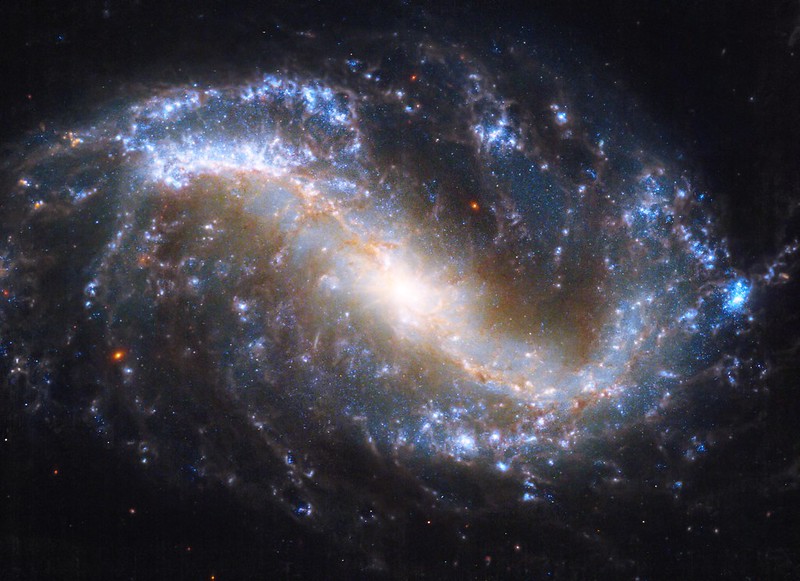New imagery from the James Webb Space Telescope shows a nearby galaxy in a whole new light.

NASA / ESA / CSA / Judy Schmidt
Just months after its long-awaited, successful launch, the James Webb Space Telescope is already delivering on its promise. Scientific teams around the world are receiving remarkably high-resolution infrared imagery of galaxies and other worlds that are proving not only breath-taking but of great scientific interest. Janice Lee (Gemini / NSF's NOIRLab) revealed one such picture, of galaxy NGC 7496, on Twitter on July 15th.
Our #phangs team was up in the early morning with @SpaceGeck waiting to download our 1st!! @NASAWebb obs... data are just ✨miraculous✨ lighting up dark dust lanes, revealing earliest stages of star formation in detail & ALL THAT FEEDBACK #pinwheelonfire #ngc7496 pic.twitter.com/DhFNjmYTX4
— Dr. Janice Lee (@janiceleeastro) July 15, 2022
Lee leads an international collaboration called Physics at High Angular resolution in Nearby GalaxieS (PHANGS). The program uses some of the best telescopes on ground and in space, including the Atacama Large Millimeter Array Radio Telescope and the Hubble Space Telescope, to learn about star formation.
In her recent tweet, Lee placed a Hubble image of NGC 7496 alongside a brand-new one from Webb. To the untrained eye, the second picture appears sharper and brighter, but there’s a lot more to it than that.
“Hubble captures visual light, Webb infrared, and both are needed; neither tells the whole story,” Lee says. “You can see in the first image these dark veins, where dust is obscuring part of the galaxy. In the second, we can see through the dust, for the first time with this detail, to see the bright clusters and bubbles that signify the early stages of star formation.”
The image is remarkable for showing star formation on a grand scale. The glowing, web-like shape shows the interdependent and regulating effects of star formation in large regions of space. There’s no such thing as the birth of a single star; formation is a global phenomenon. The Webb image shows evidence (in the structure of the glowing dust outlining bubbles) of both positive feedback, which compresses clouds of gas and dust to create new stars, and negative feedback, which disperses molecular clouds and interrupts star formation.
Feedback can come in the form of intense ultraviolet radiation and stellar winds. These forces act as a cosmic push and pull to both gather and disperse matter. As seen in the image above, both forces can result in shells of gas and dust around newly formed stars.
We see the effects of feedback in the glowing red lines, which represent complex molecules known as polycyclic aromatic hydrocarbons (PAHs), explains Brad Whitmore (Space Telescope Science Institute), another member of PHANGS.
“PAHs are excited by ultraviolet light from young stars and emit their energy at longer wavelengths, in the mid-infrared,” he says. “So the way this image lights up is what we hoped for and more, showing young clusters, active star forming regions, and uncovering embedded star formation.”
The PHANGS collaboration will be looking at Webb data for 19 nearby galaxies to better understand stars and star cluster formation. The early stages of the stellar cycle were previously invisible to us, blocked by dust our instruments couldn’t penetrate. Previous infrared space telescopes, including NASA’s Spitzer and ESA’s Herschel, couldn’t provide sharp-enough images for this particular task. But Webb does. Soon we will be able to test ideas about star formation and feedback in unprecedented detail.
 1
1









Comments
Rod
July 31, 2022 at 8:08 am
NGC 7496, what is the spiral arm lifetime before the need for regeneration of the arms and age spread for the blue-white stars visible compared to the red stars? Are we looking at Myr vs. many Gyr age differences here including short lived spiral structure before regeneration is needed?
You must be logged in to post a comment.
You must be logged in to post a comment.